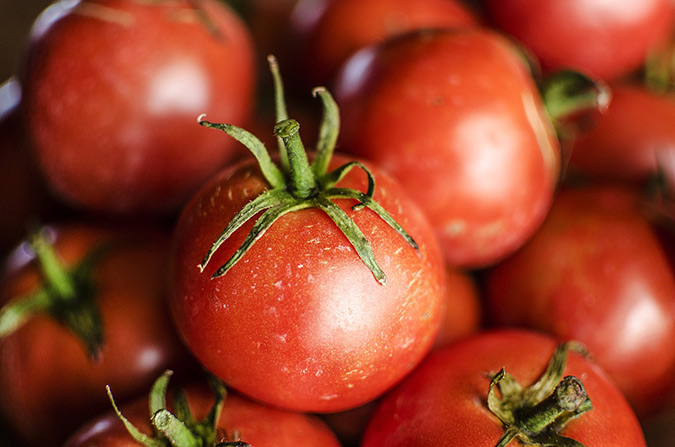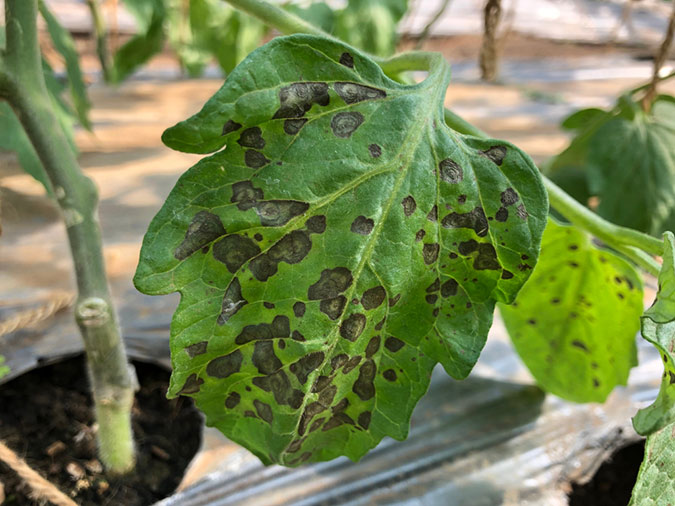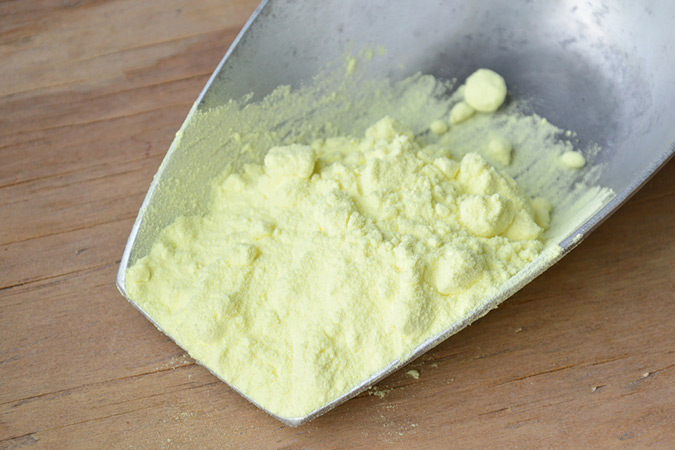Black spots on tomato leaves don’t spell the end for your garden when you use the following easy-fix treatment for this normally lethal fungus.
Black Spots on Tomato Leaves? Save the Day With This Simple Organic Fix!
This article was an entry in our 2014 “How To Grow Tomatoes: Tips, Tricks, and Tutorials” contest. We treasure our Community members for the valuable “living resources” they contribute to our ever-growing TGN library.
Black Spots on Tomato Plants in My Garden
We live in a mobile home park in what looks like a Los Angeles suburb but is really California’s low desert.

Image by Ryan McGuire from Pixabay
Keeping the plants watered in our poor, clay soil is our biggest issue as tomatoes do best if deeply watered and left alone for a week or two. I’ve found I have to supplement by over-spraying the garden to simulate evening rain. It cleans the dust off the leaves, and aphids appear to dislike it.
Black spot fungus has also been an occasional problem in some years.
Now, some would say this is caused by getting the leaves wet, but tomatoes have been rained on for millennia. After all, they’re native to the hot, humid tropics. Therefore, I just don’t buy that idea (and the watering doesn’t bother the squash either).
You May Also Enjoy:
Learn to Grow Pinterest-Perfect Tomatoes With TGN’s ‘Tomatoes: From Seeds to Sauce’ Toolkit!
“The Easiest Way to Prepare a Garden Bed”
Tomatoes are also perennials in their natural habitat, for those who didn’t know. I’ve kept tomato plants and their relatives the bell peppers for as long as 5 years here—so long as I can keep them frost free. They get huge without pruning.
Expert Advice Versus Practical Experience
Black spot fungus appears as, well, black spots on tomato leaves. It usually affects the lower ones first, followed by yellowing and dropping of the foliage. It will reduce or outright destroy yields and eventually kill the plant.
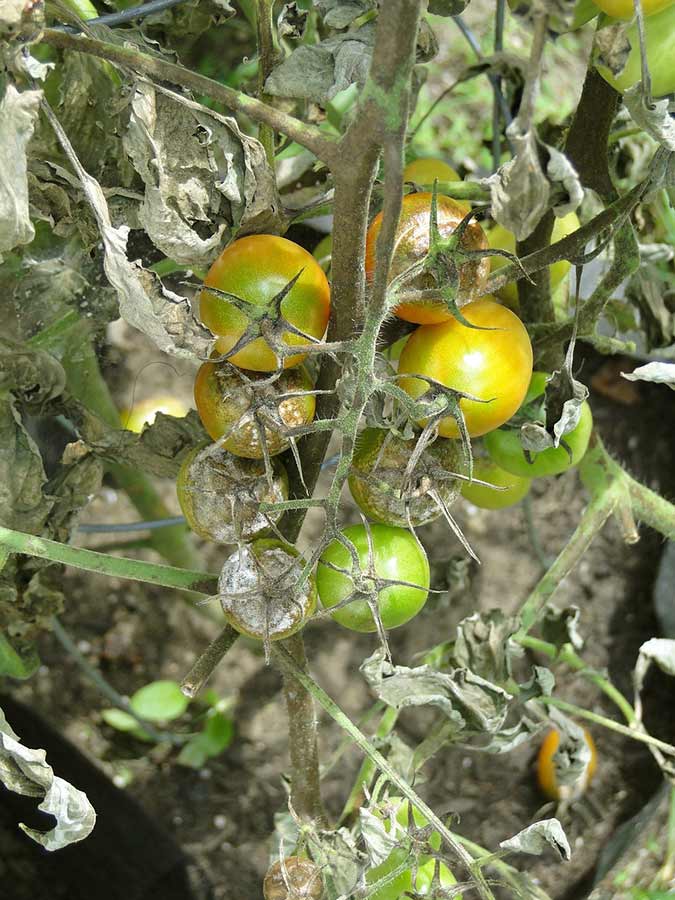
Image by Pam Carter from Pixabay
The standard “expert” advice is to pull any affected plant out and dispose of it. I have done that in some cases, and I certainly wouldn’t put one in the compost. But I have also saved plants with a very simple treatment.
It occurred to me that, since it’s a fungus, antifungal substances should control it. I wanted to stay organic, so I went to the local pharmacy and picked up a bottle of flowers of sulfur. This is just powdered sulfur.
It worked beautifully.
How to Treat Black Spots on Tomato Leaves
Here’s how simple it is. Cut the toe out of an old pair of panty hose or a knee-high. Fill it with powdered sulfur. Tie it shut.
Now, holding it by the knot, dust the whole plant with it using a bouncing motion, as if you were playing with a yo-yo. Be sure to dust the soil around it as well, plus any neighboring plants.
Repeat as necessary. I haven’t found this to affect soil pH much. As an aside, this method works very well to apply other powders in the garden and around the home, such as diatomaceous earth.
You May Also Enjoy:
A Win for a Wonderful Fruit
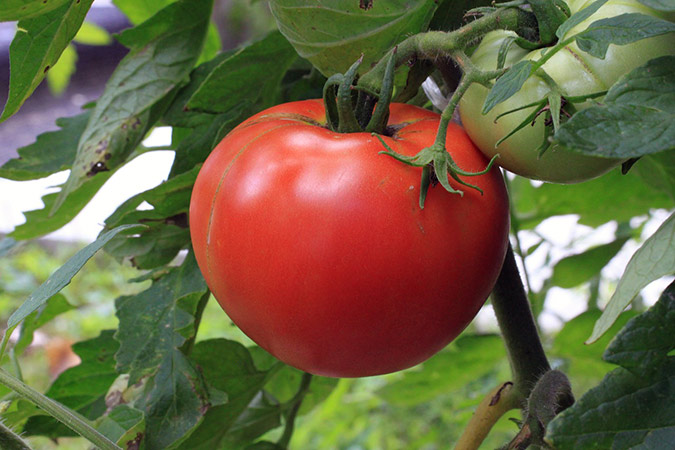
Image by Mary Pahlke from Pixabay
We saved three of our potted tomatoes a couple of years ago with this method; they turned out to be our biggest producers. You may have trouble finding flowers of sulfur at the pharmacy now. I’ve noticed a few things have vanished from the shelves, but I’m sure you can still find it at garden centers.
What Do You Think?
We want to hear from more of our readers! Have you battled nefarious black spots on tomato plants in your garden? Let us know your personal tips and techniques in the comments below.
——————————————
This is an updated version of an article that was originally published on July 17, 2014. The author may not currently be available to respond to comments; however, we encourage our Community members to chime in to share their experiences and answer questions!
The Grow Network is a participant in the Amazon Services LLC Associates Program, an affiliate program designed to provide a means for our team to earn fees for recommending our favorite products! We may earn a small commission, at no additional cost to you, should you purchase an item after clicking one of our links. Thanks for supporting TGN!

The Grow Network is a global network of people who produce their own food and medicine. We’re the coolest bunch of backyard researchers on Earth! We’re constantly sharing, discovering, and working together to test new paths for sustainable living—while reconnecting with the “old ways” that are slipping away in our modern world. We value soil, water, sunlight, simplicity, sustainability, usefulness, and freedom. We strive to produce, prepare, and preserve our own food and medicine, and we hope you do, too!
